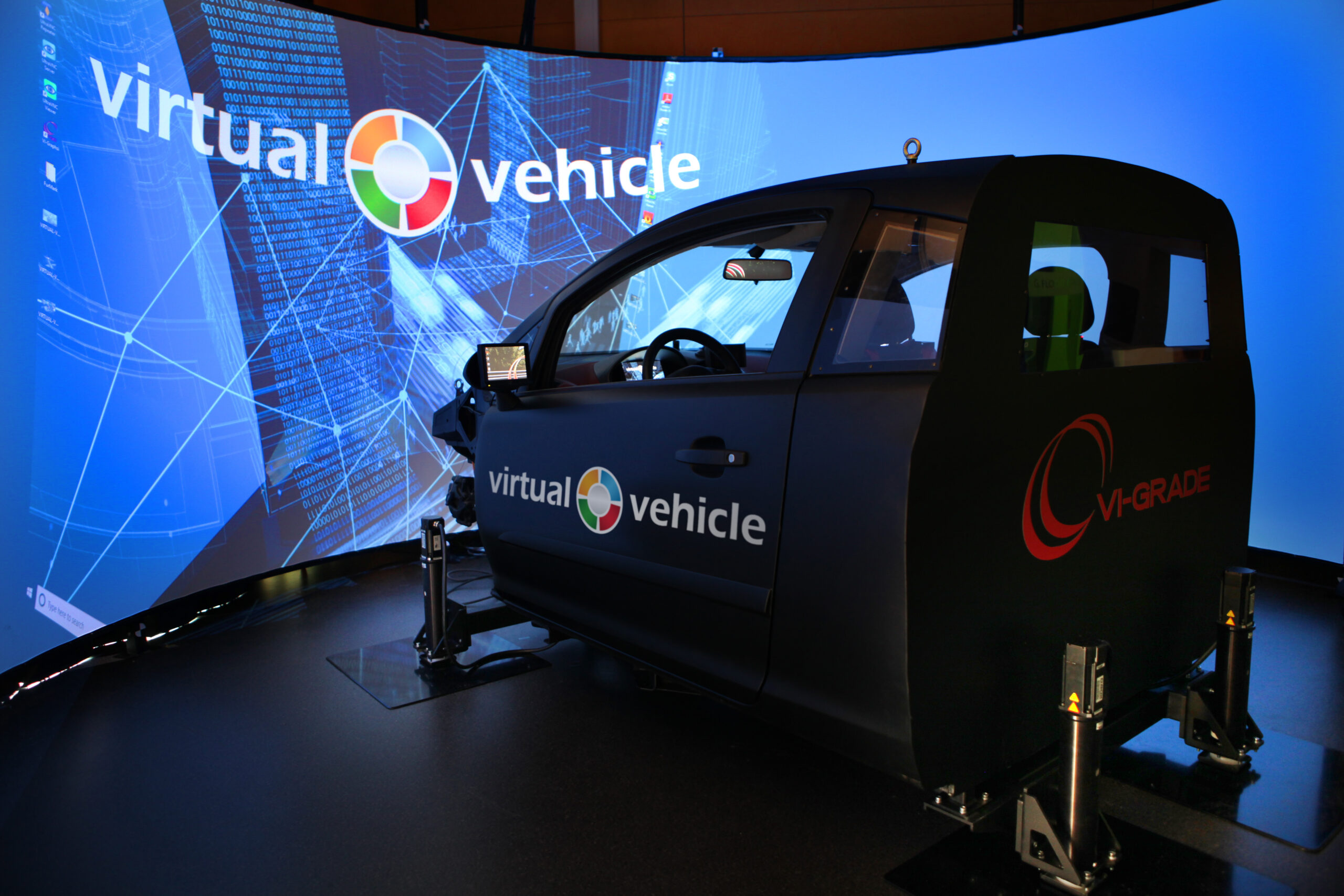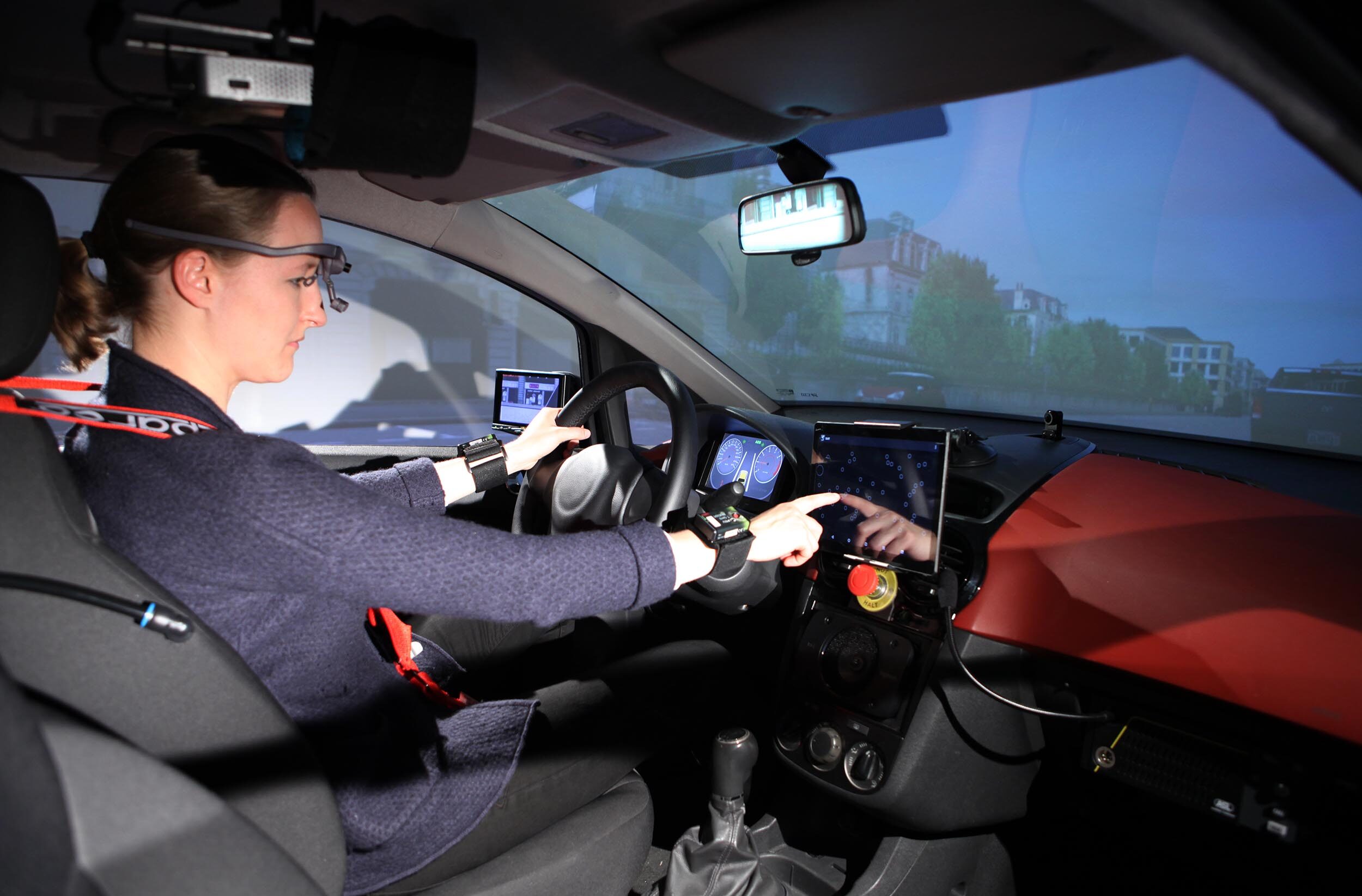
DriveLab
Research goals and services
Human Factors research investigates aspects related to driver’s interaction with the vehicle and the surrounding environment, including vulnerable road users and other vehicles in various environmental conditions. Typical aspects that are evaluated are driver’s distraction, drowsiness, human-machine interface usability, driving behavior and responses, driving style in varying traffic conditions, etc.
Collected data are used to inform driver models and AI-based systems to improve human-system integration towards increased acceptability, safety and usability of manual, automated and connected vehicles.
Highlights
The system is supported by small actuators that enable heave, pitch and roll motion of the cabin, increasing the feeling of realism and providing important cue onsets for the perception of believable motion.
The seat and belts are actively adjusted to provide varying pressure stimulation to the driver’s body, ensuring an experience of longitudinal and lateral acceleration (like, e.g., braking or driving around a curve) that is consistent with the visual.
A multidisciplinary research team is ready to address any research challenge providing support throughout the entire process, from problem identification and formulation, design and adaptation of methodologies to specific use cases, study implementation and execution, data collection and analysis, to publications and dissemination activities.


Dr. Paolo Pretto
Principal Researcher
Human Factors & Driving Simulator
+43 316 873 9720
paolo.pretto@v2c2.at